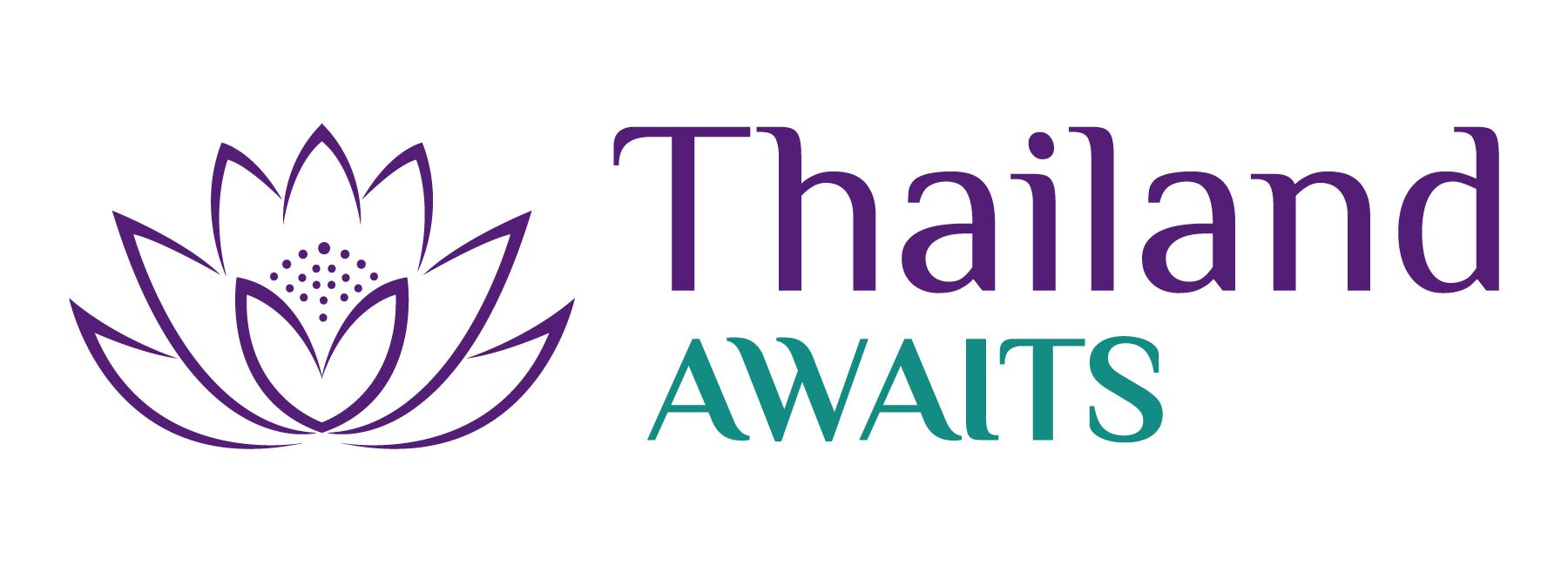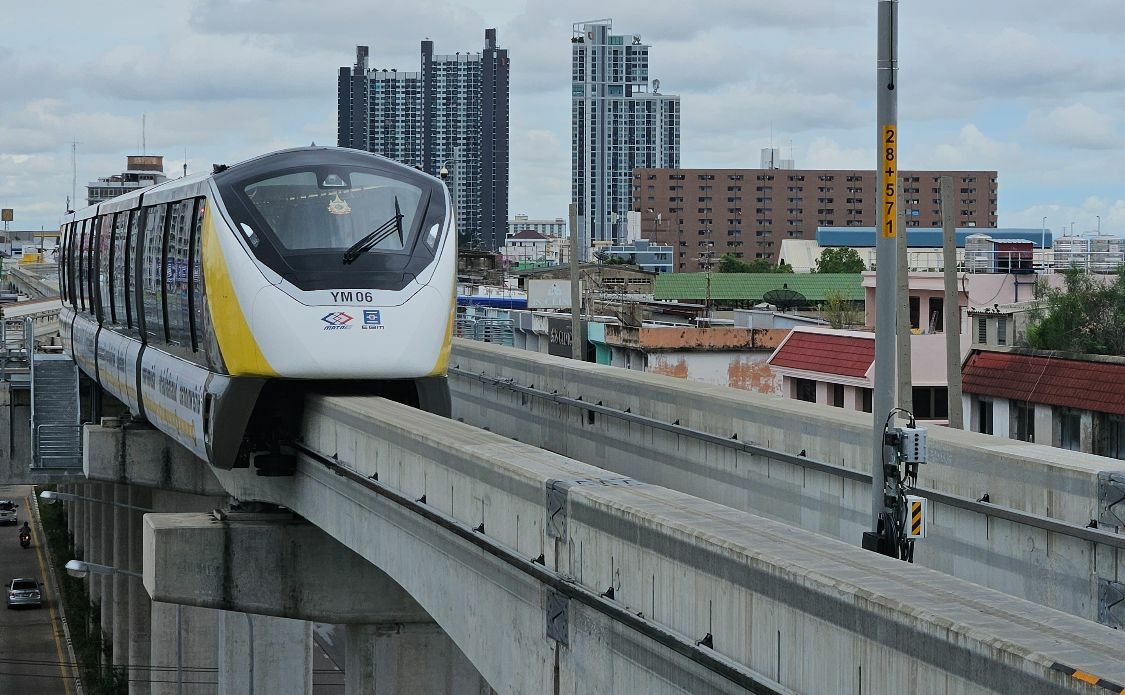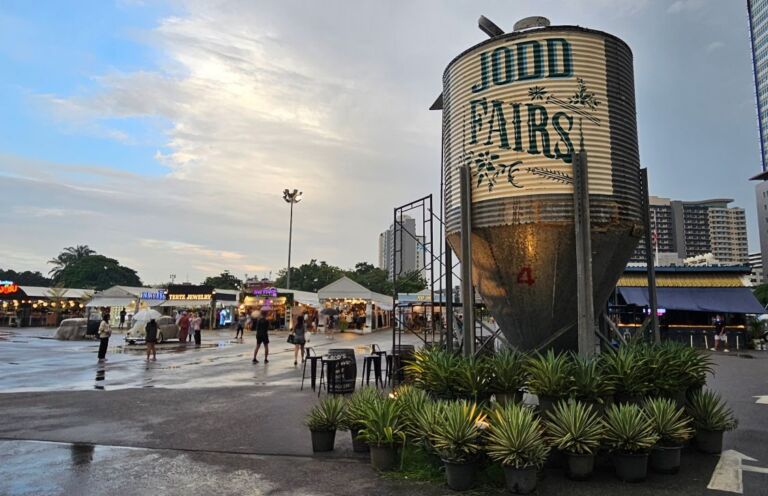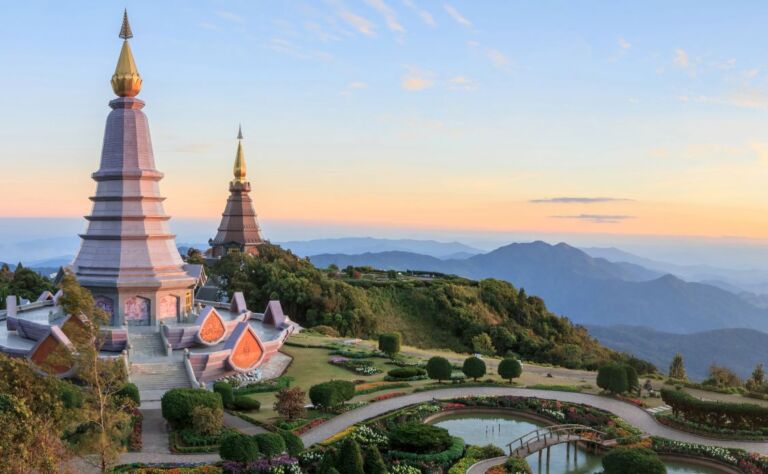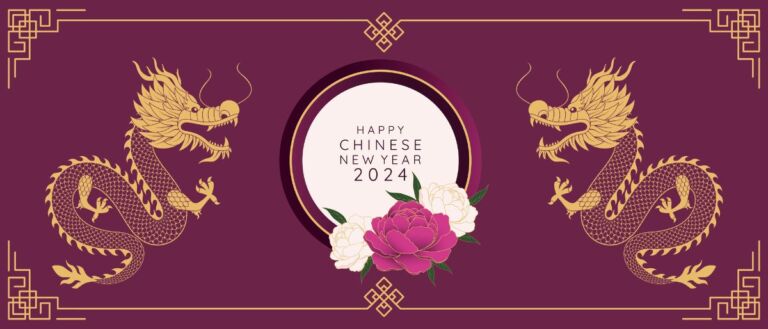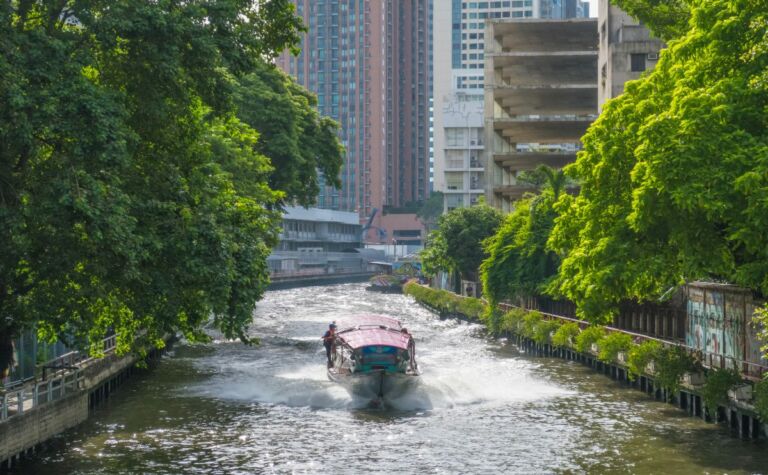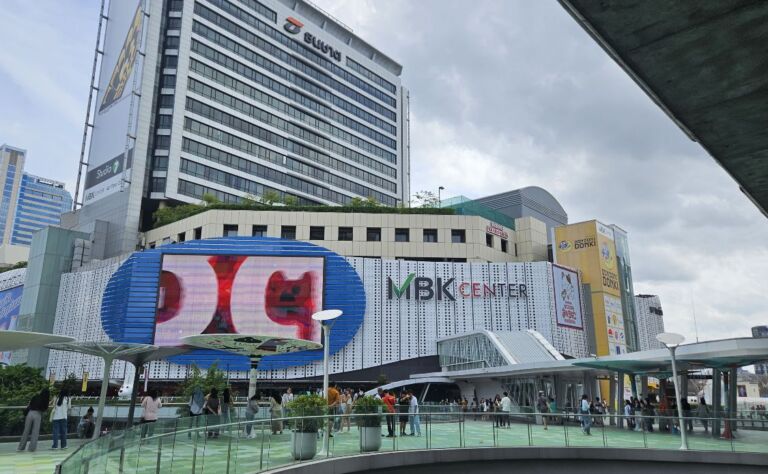Master 3 new Bangkok Train Lines: The Pink, Red, & Yellow Lines for visitors
If you have visited Bangkok before, you might be ready to explore the capital in a whole new way. Well we have an idea. Why not spend a day riding one of the newer Bangkok train lines: the Pink, the Dark Red, or the Yellow. Ditch the crowds and explore the extraordinary sights and sounds that lie just beyond these colorful rail lines.Local writer Stephen Christopher shares a few of the highlights along these new lines, each offering a window into a different side of Bangkok.
This page contains affiliate links. Please see our disclosure policy for more details.
Bangkok’s transport system can be a little confusing for new arrivals, the BTS or SkyTrain, the MRT which runs underground in the centre of Bangkok before heading above ground further out and the railways that generally head outside the city centre.
Understanding the Bangkok Transit System
There are three transport operators in Bangkok:
- Bangkok Transit System (known as the BTS)
- Mass Rapid Transit Authority of Thailand (MRTA)
- State Railway of Thailand (SRT)
Collectively, they provide extensive coverage of Bangkok and the three surrounding provinces of Nonthaburi, Pathum Thani and Samut Prakan, with services being expanded further north and south in the future.
We’ve already covered how to use the BTS green lines and the MRT blue and purple lines. Three new lines are now open in Bangkok, taking passengers even further afield than before.
I’ve had the opportunity to test them all, so here’s my guide to the Red, Pink, and Yellow lines.
Bangkok Train Lines Explained
Due to the existing road infrastructure, these train lines have been constructed above or below the ground, mainly following the roads. This has created a rather complex set of lines that run in various directions with numerous interchange systems, not unlike the London and Paris metro systems.
Each line is designated a colour. The BTS was the first and has the well known green and light green lines, in the past few years, these have been extended further north and south with more to come.
For years, the MRT only operated the Happy Blue Line, but in 2016, the Purple Line opened, allowing people from the neighbouring western province of Nonthaburi to commute daily to Bangkok for work. The interchange station is Tao Poon on the Blue Line.
The Dark Red Line opened in August 2021, The Yellow Line opened in July 2023, and the newest of all, The Pink Line, opened in November 2023.
Here’s more detail on where the lines go and what you can visit as a tourist from these newer forms of transport in Bangkok.
The SRT Dark Red Line
Back in 1916, Hua Lumpong station in Bangkok became the designated ‘central station’ of Bangkok, where all the State Railway of Thailand (SRT) trains would depart to travel all across Thailand. It’s a regular train system with standard tracks along the ground. This line is known as the Light Red line. It operates on a limited schedule a couple of times a day.
In August 2021, a raised section of line over some of the existing stations was opened and is called the Dark Red Line. Unlike regular trains, which still operate on the ground beneath, these are modern skytrains that operate every 15–20 minutes to stations that require additional traffic like the Don Mueang Airport.
Hua Lumpong was scheduled to close in 2021 to become a museum. However, the plans have stalled, and services to other inter-province cities, including Pattaya and Chiang Mai, still operate from there.
Bang Sue Grand Terminal (now called Krung Thep Aphiwat Central Station) is scheduled to be the new beginning and end of intercity trains and is the terminus of the Dark Red Line. It also interchanges with the MRT Blue Line at Bang Sue.
The Dark Red Line has two destinations from Bang Sue Grand Terminal, Rangsit to the north and Taling Chan to the west. The line covers a total distance of 41.5 kilometres and has 14 stations.
What’s for Tourists on the Dark Red Line?
The primary reason for using the Dark Red Line — and it’s a biggie — is that, finally, there’s a quicker way of getting to Don Mueang Airport than sitting in a famous Bangkok traffic jam. It’s just seven stops from Bang Sue Grand Central to this airport which is the home of most domestic and budget airlines flights.
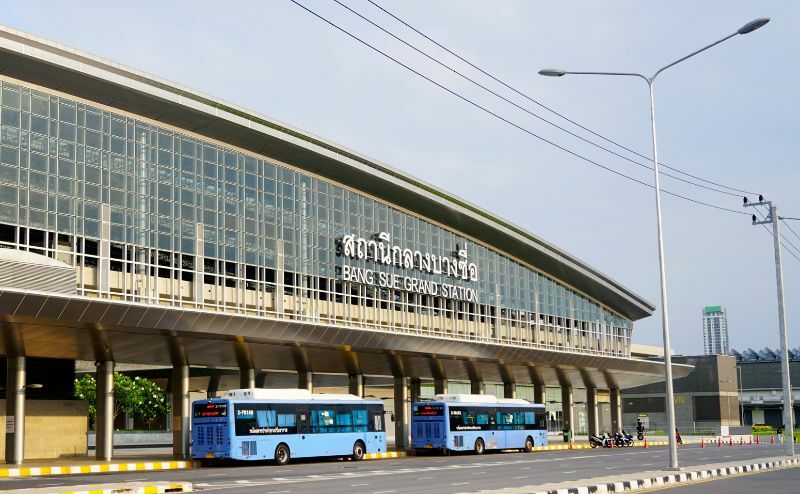
I’ve used the red line to get to the airport and was blown away by how easy it is. The walk from the platform to the terminal was 5 minutes. As a regular passenger at DMK airport, my apprehension about needing to leave home 5 hours before a flight has disappeared forever!
The airport isn’t the only reason to travel on the Dark Red Line. It also provides access to cultural landmarks, including the incredible Wat Samian Nari. It has its own station, two stops from Bang Sue. Initially built in 1857 as Wat Khae Rai, the stunning temple complex with stucco and gilded decoration had its name changed in 1979 to Wat Samian Nari. Its main claim to fame today is that it’s rumoured to be haunted.
The story goes that two sisters in black were killed by a train (at the nearby SRT Light Red Line station) in the early 1900s, and they sometimes appear in front of people or cars that run through the temple area. I doubt I’ll be visiting that temple at night anytime soon.
The MRT Yellow Line
The Yellow Line, operated by the MRTA, runs from the western district of Lat Phrao to Samrong in the south. It covers a distance of 30.4 kilometres and has 23 stations. This line provides access to parts of Bangkok that could only be reached by traffic-heavy roads and has helped residents immensely speed up their commute times.
The line interchanges with the Blue Line at Lat Phrao and the Green Line at Samrong. It also connects with Hua Mak station, which is 3 stops away from Suvarnabhumi Airport on the SkyTrain.
What’s for Tourists on the Yellow Line?
For shoppers (like my husband) or for runners like me, the Yellow Line has us both covered.
There are five major shopping centres on the Yellow Line accessed from the following stations:
- Central Festival Eastville – Chok Chai 4 (YL03)
- The Mall Bangkapi – Bang Kapi (YL08)
- Seacon Square and Paradise Park – Suan Luang Rama IX (YL15)
- Central Plaza Bang Na – Si Lam (YL17)
These suburban malls are impressive and it’s a good way to see regular life rather than the tourist packed malls of Siam and upper Sukhumvit.
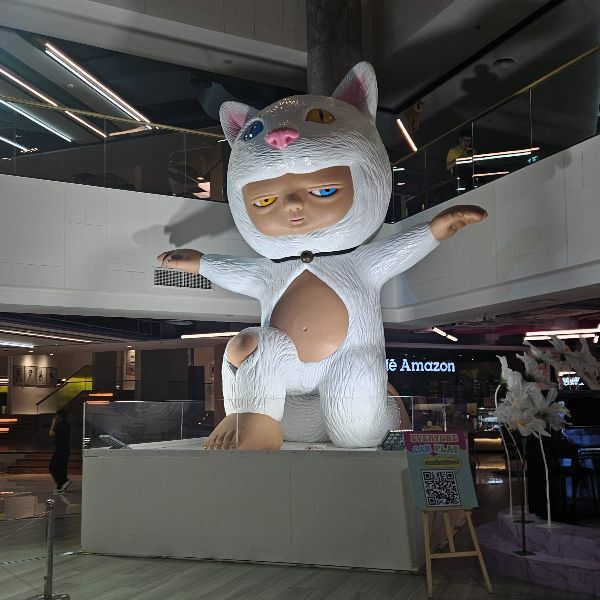
In addition, the Srinagarindra 38 (Rod Fai) Night Market, a popular open-air bazaar known for its vintage goods, is most accessible from confusingly, not Srinagarindra 38 station but from Suan Luang Rama IX.
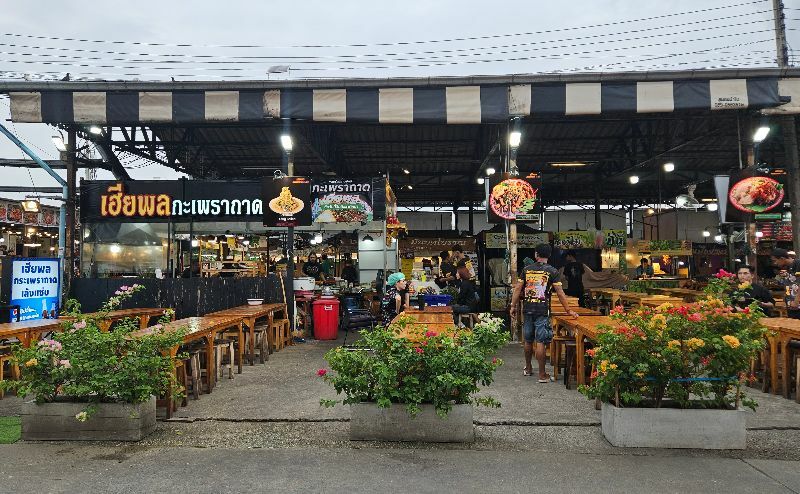
If you’re a runner like me, Yellow Line has it sorted:
- Piya Phirom Park – Si Kritha (YL10)
- Suan Luang Rama IX Park – Suan Luang Rama IX (YL15)
The MRT Pink Line
The Pink Line, operated by the Mass Rapid Transit Authority of Thailand (MRTA), runs in a semi-circle from the centre of Nonthaburi Province in the west to the southeastern district of Min Buri in Bangkok. It covers a distance of 34.5 kilometres and has 30 stations.
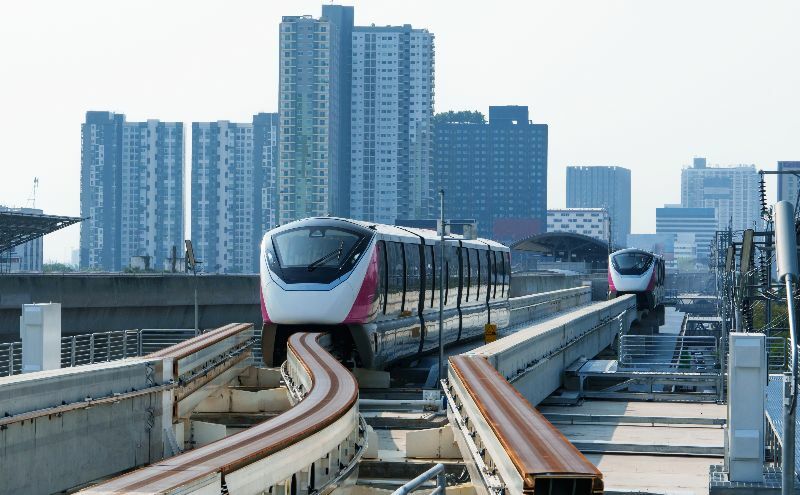
The line interchanges with the Purple Line at Nonthaburi Civic Centre, the Red Line at Laksi, and the Green Line at Wat Phra Si Mahatat.
What’s for Tourists on the Pink Line?
The most useful station on the Pink Line for tourists and expats alike is the Government Complex (PK12). This is the home of the Bangkok Immigration Department. Tourists holding a visa waiver can extend it by another 30 days by coming here. Expats like me need to visit once a year to renew my visa.
This destination was a nightmare to get to in the past as the always-crowded Changwattana Car Park (I mean road) is congestion-city 24/7. The Government Complex has a free shuttle bus from the main road entrance to Building B — immigration.
That’s not all; the Pink Line has something for every type of tourist in Bangkok:
- The first station, Nonthaburi Civic Centre (PK01), is home to Makut Rommayasarn Park. I love running here; it’s precisely 1km around, making it easy to count your laps.
- Ko Kret Island is a lovely man-made island in the heart of Nonthaburi province and can be easily reached from Yaek Pak Kret Station (PK06)
- Impact Arena in Nonthaburi is where all the live bands and other forms of entertainment perform.Muang Thong Thani station (PK10) is your access point.
- Temple lovers mustn’t miss Wat Phra Mahatat Woramahawihan. It was the first temple constructed in Bangkok after the Siamese Revolution of 1932 — exit at Wat Phra Si Mahatat station (PK16).
- Shoppers, the Pink Line hasn’t forgotten you. Fashion Island Mall is right at Outer Ring Road Ram Intra station (PK25).
- The second last stop in the line is the Minburi Market (PK29); this wet market has everything a home cook could need for an evening in.
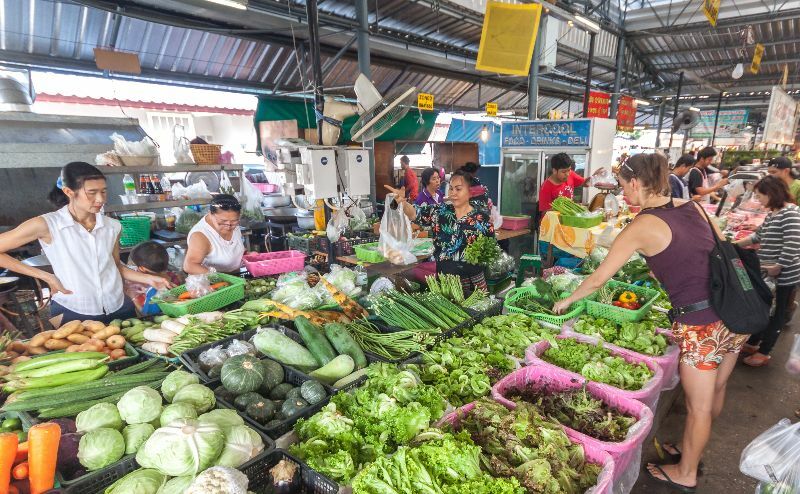
All pink line stations have both lifts and escalators, making them accessible for all travellers.
How to Get Tickets for the Red, Yellow and Pink Lines
For years, there’s been talk of the ‘one card to access all lines,’ but it’s not here yet. As such, there are three ways to buy your tickets.
- Every station has an automated ticket machine; the instructions are in Thai and English. Enter your start and finish destinations, enter the coins (a few machines at some stations accept notes, but I’ve been caught out many times), and you’ll be issued with a tap card or token.
- Every station is also staffed with ticket sellers; the busier stations have more than one. The queues here can be pretty long, so try to have coins with you to use the machines.
- If you’ve been in Thailand a while, like me, it makes sense to buy a BTS card. These can be topped up online or at a station and work with the tap-on/tap-off feature. They’re super convenient and allow you to avoid queuing to pay. The Thai government, however, has requested that you show your passport to purchase and validate your card the first time you use it.
- On the MRT you can use your credit or debit card.
Contactless payment by using your credit or debit card can be used on the Yellow and Red Lines.
The Yellow Line uses the BTS’ Rabbit Card, while the Pink Line uses the MRT card. The Dark Red Line is its own creation, so it doesn’t have a card yet.
Come and Check out the Colourful Railway Lines in Bangkok
So there you have it. Getting around Bangkok is getting more effortless than ever. The Dark Red, Yellow and Pink Lines help you avoid losing valuable holiday time by being above the traffic jams, making your time here even better.
I hope to see you sitting next to me on one of these trains very soon.
Ready to start planning your Thailand trip? Our Facebook community Thailand Awaits is here to help. Join fellow travellers, get your questions answered by Thailand experts, and access free planning resources.
